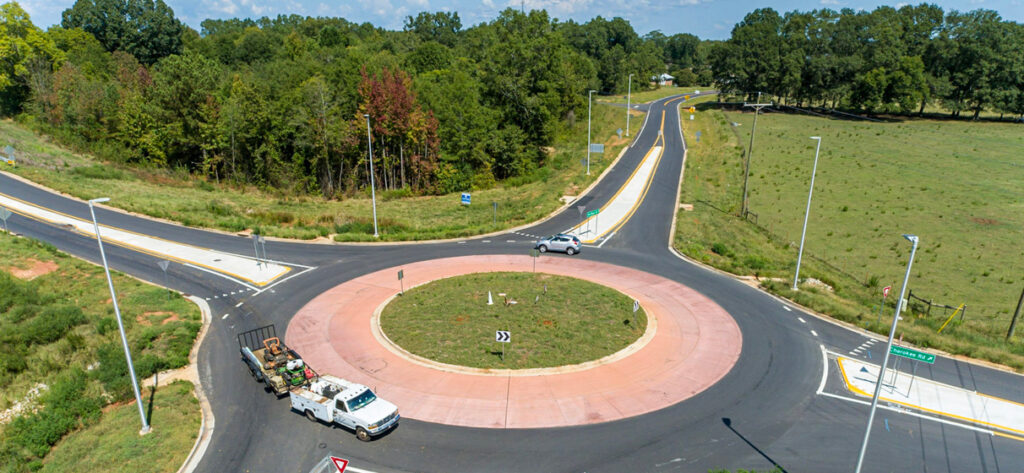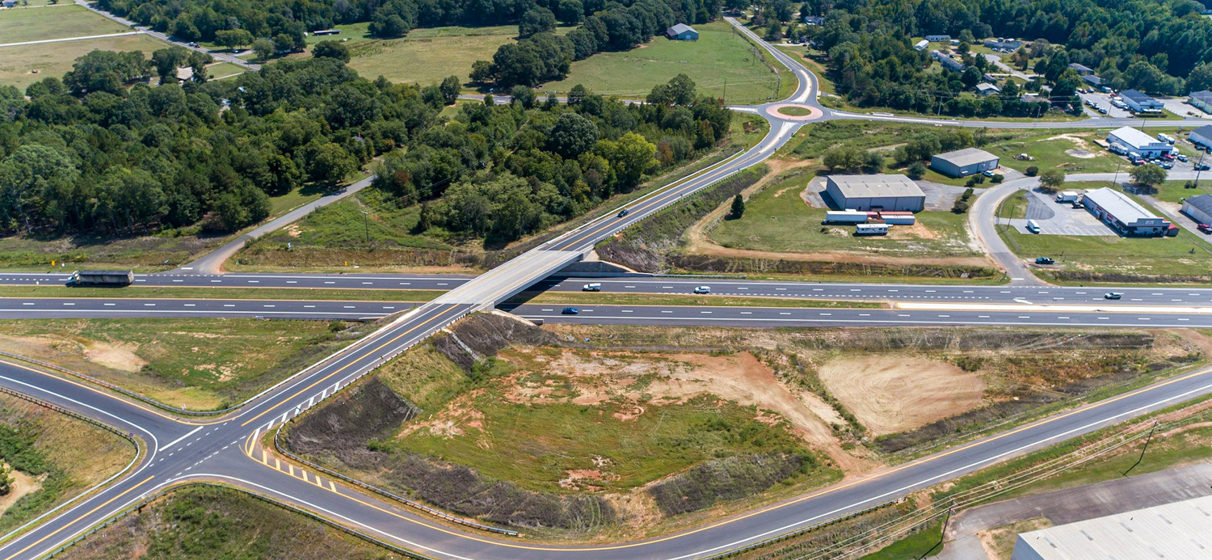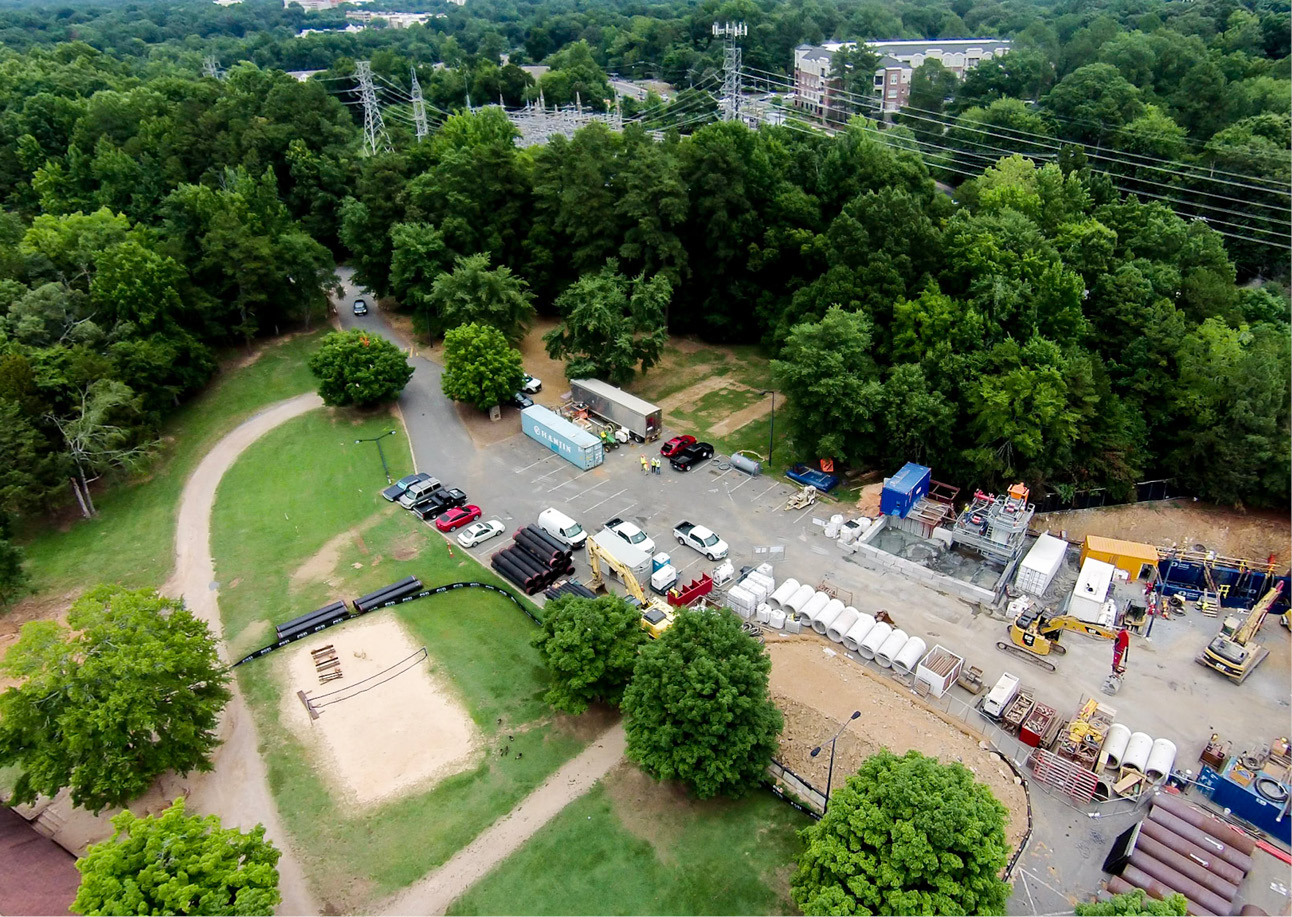In recent years, the South Carolina Department of Transportation (SCDOT) has committed to replacing aging bridges and improving mobility and safety along rural roads throughout the state. In Anderson County, SC, the local S-75/Cherokee Road crosses over US 29, connecting smaller and more rural communities to larger cities across the state. Originally built in 1957, the SCDOT identified the S-75/Cherokee Road Bridge as structurally deficient and functionally obsolete. With low vertical clearance, the bridge did not meet current standards for freight vehicles, causing impacts to safe mobility and potential challenges for commercial growth in the area.
STV served as lead designer, advancing the replacement of the two-lane concrete bridge, as well as other roadway improvements along the vital US 29 corridor. This effort earned an Engineering Excellence Award from the American Council of Engineering Companies of South Carolina (ACEC SC).
The final design features a new, single-span bridge, upgraded exit and entrances ramps from US 29 to S-75, mechanically stabilized earth (MSE) walls, and a roundabout at an adjacent intersection of Joe Black Road. An additional intersection improvement along US 29 at S-77 and Twenty-Nine Court was also part of the project and features safety upgrades including concrete medians, additional pavement widening for traffic storage, and an acceleration lane.
The project is one of several improvements that SCDOT has initiated along US 29, including the approximately 500 statewide bridges that the agency is rehabilitating and replacing. In partnership with the Appalachian Council of Governments and the Anderson Clemson Area Transportation Study, SCDOT is exploring mobility options and enhancements through its Rural Roads Safety Program and its US 29 Corridor Study, aimed at better serving the communities that rely on this highway that runs from Florida to Maryland.

“Our team has been involved with this project since the mid-2000s,” said Andrew Fisher, PE, STV’s vice president and area manager for South Carolina, who also served as a roadway engineer and a project manager for S-75/Cherokee Road. “Once the project started to move forward again, STV and SCDOT collaborated to identify that the proposed Joe Black Road’s signalized intersection footprint would have impacted more right-of-way as well as nearby wetlands as opposed to a roundabout. Our roundabout design, which is less common in a rural area like Cherokee Road, is easing traffic congestion, is more economical and improves safety.”
The design team also selected Florida I-beams (FIBs), to be more efficient and economical. These pre-stressed concrete beams, which were first developed by the Florida Department of Transportation, have a higher load carrying capacity, offer longer spans, and oftentimes help with vertical clearance requirements. At the time, the FIBs were not widely utilized in the design of new bridges in South Carolina but have since become more readily used.
“The project is playing a key role in SCDOT’s bridge program, yet it also features mobility and safety improvements along rural roads,” Fisher said. “SCDOT is prioritizing these mobility options and enhancements which demonstrates consideration of more rural communities, freight trucking, and folks who are commuting to larger cities for work.”







